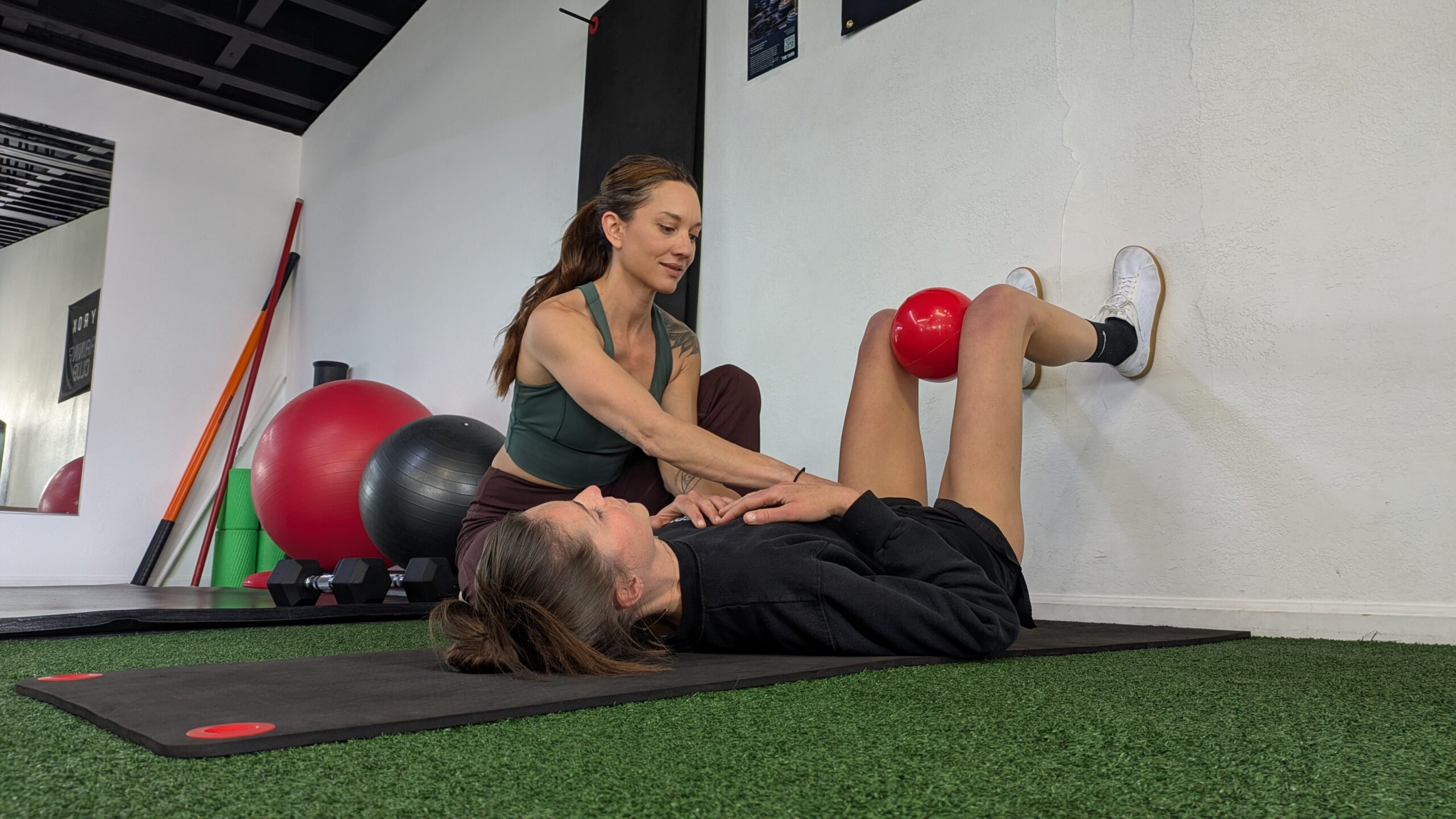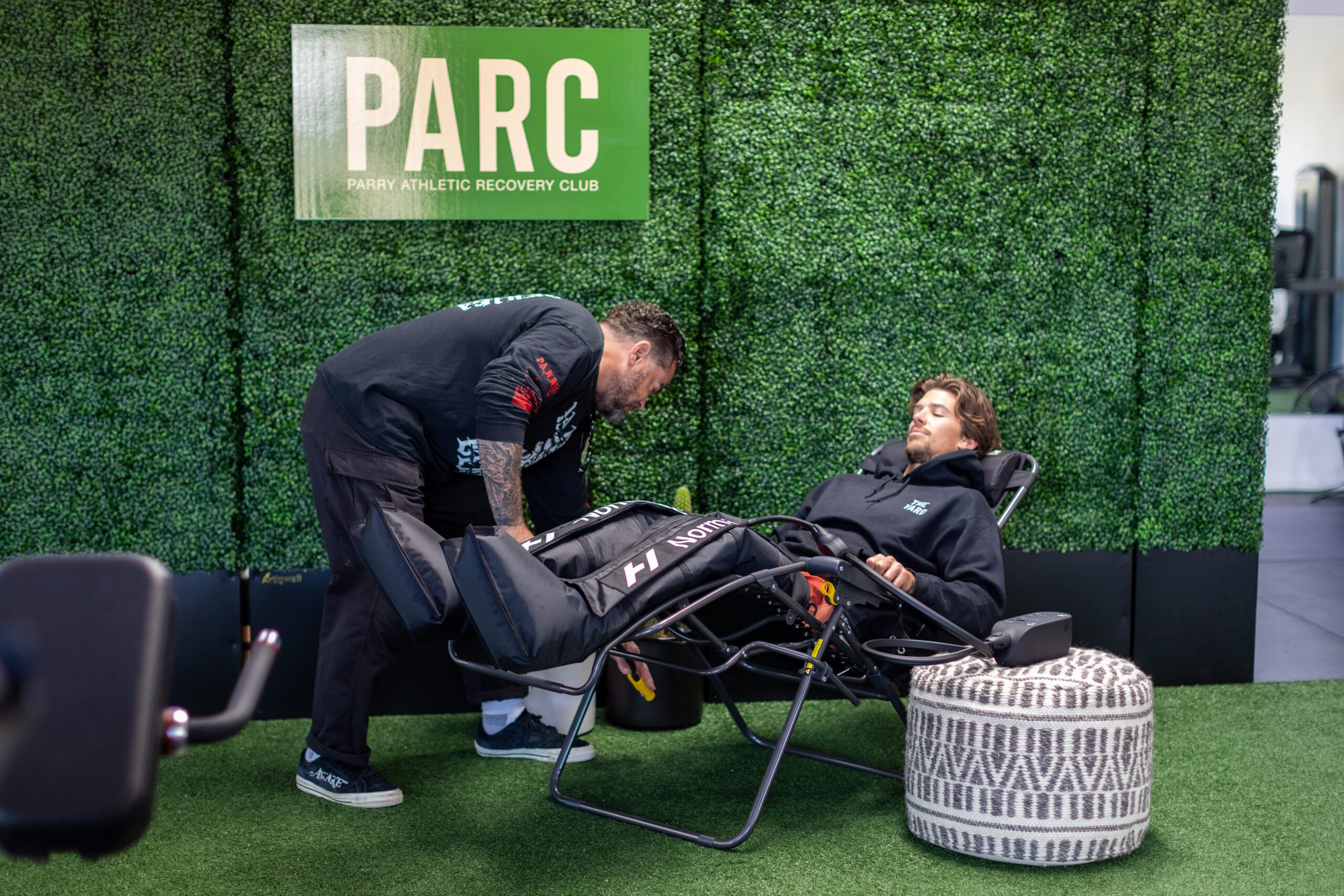The following entry is written by Yard certified independent personal trainer Kristina Macias, M.S., who works as an exercise physiologist and strength, mobility and breath coach. Learn more about Kristina at primalcoding.com.
Strength doesn’t only come from pushing harder, lifting heavier, or dialing in your nutrition—it’s built in the spaces between, during your rest and recovery.
What you do between your high-intensity efforts matters as much as the efforts themselves. Recovery is essential for health and performance, whether you’re a professional athlete, a weekend warrior, or simply looking to move and feel better. This is your space to relax and nourish your muscles, fascia, organs, and nervous system. A space to slow down and notice. A space to correct subtle patterns of movement and breath that influence how you perform and feel—both in and out of the gym.
Recovering from your strength training or cardio sessions can look like many things: a walk in nature, a long exhale, a restorative yoga class, functional movement, or even a light sled push and pull. The purpose of recovery is to rebuild your body after a hard training session. It balances the spectrum of intensity—helping you become just as soft and slow as you are strong and powerful.
Recharge, The Yard’s recovery class in Mill Valley is designed to help you restore, rebalance, and rebuild—so you can train harder, move better, and feel your best.
Through breath, movement, and therapeutic tools, we’ll explore the often-overlooked elements that elevate performance and improve longevity.
Breath: The Foundation of Recovery and Performance
Your breath is a language. It shapes your posture, your presence, and your performance. Breath training is at the heart of nervous system regulation and mobility.
In my experience 10+ years of metabolic testing, the most common observation is lack of proper rest and recovery. This shows up as a decrease in metabolic efficiency, low resting metabolic rate (RMR) or low heart rate variability (HRV). People are afraid to “take a day off”. Which indicates that you probably NEED IT. A part of REST may involve laying down and/or relaxing, but that is also the perfect time to practice a breath pattern for Heart Rate Variability or work on your CO2 tolerance with light breath holds.
Breath patterns have many purposes, but the foundation of breath training lies in how well your breathing mechanism functions. This includes your diaphragm, intercostals, and core muscles and how they all work together. Your breath is also your attention, and how you pay attention matters. When you learn to connect your breath to your core, you unlock more mobility, strength, and power. Recovery breathwork sharpens this connection, so it becomes unconscious and automatic in your everyday life and training.
In class, you’ll explore breathing techniques that help:
- Release and strengthen your respiratory muscles
- Improve sleep
- Down-regulate the nervous system
- Build resilience to stress
From a natural everyday breath to a long exhale, in The Yard’s recovery class, you will build a tool belt of breath patterns; let’s say your rest days will never be boring. These tools are vital in both active recovery techniques and stress recovery workouts.
Movement: Functional Recovery for Everyday Athletes
Movement is medicine—a tool to support your training, hobbies, and vitality. Functional mobility classes like this one build better body awareness and fascia release, improving performance inside and outside of the gym.
Recovery movement should never leave you sore. Instead, it should increase circulation, reduce tension, and nourish your tissues. I invite you to consider creating a “vocabulary” of recovery patterns, movements, or activities that can fit into any of your rest days.
This might include:
- Hanging and crawling… even rolling.
- Exploring new movement patterns
- Slowing down to observe and shift subtle imbalances
- Releasing and mobilizing fascia and joints with intention
The days you are not training hard, you can move and play, enjoy a walk in the sun, attend an ecstatic dance, move your body in ways you do not move in training. Training can be very linear, but we as humans are not. We are dynamic, there are an infinite number of combinations that breath and movement can co-create.
In the recovery class, you’ll get hands-on tools for fascial care, functional mobility, and restorative movement that supports everything you do. It’s the ideal stretching and sauna class in Mill Valley to complement your strength training.
Sauna: Heat Therapy for Recovery and Longevity
Sauna bathing has been practiced for generations—not just for warmth but also for community, connection, and well-being. Today, modern research confirms what ancient cultures knew: saunas have powerful health benefits. Research has shown, a combined high Cardiorespiratory Fitness (CRF) combined with sauna creates even more protection from chronic disease than each alone.
When done consistently, sauna use is shown to:
- Improve cardiovascular function
- Reduce risk of hypertension and stroke
- Support immune resilience and mental well-being
- Alleviate muscle soreness and joint discomfort
- Improve sleep quality and recovery
There are many variations of passive heat therapy, some more intense than others. From the traditional Finnish sauna, with temperatures that can range from 180-200F, to Waon therapy, a more mild temperature with infrared light followed by a period of rest in a warm environment, or the intense healing heat of a sweat lodge. The spectrum of intensity can be applied across a variety of applications. The Yard, Mill Valley uses a traditional Finnish Sauna, aka dry sauna, to provide the healing and recovery benefits of passive heat therapy.
Whether for its actual physiological benefits or for the space to relax, the sauna is a staple in the language of recovery. During the class, we will combine sauna with a subtle breath and movement circuit, gently guiding your body to a restored state.
As you begin to build your language of recovery, we must remember that with so many options available, the key is intelligent, intentional integration.
Recovery isn’t a luxury—it’s a strategy.
Join us at The Yard in Mill Valley to explore a deeper, smarter way to restore and rebuild. Whether you’re training hard, healing up, or just looking for more energy and mobility, this class will give you the tools to recover well—and perform better.
Ready to Recharge and take the next step in your strength training recovery? Explore our classes and sign up today at goyard.fit.
Research
Bishop, Philip A. Et al. (2008) Recovery from training: A brief review. Journal of Strength and Conditioning Research. 2 (3): 1015-1024
Fried, Robert PH.D. (2000) Why do we need to teach “natural breathing”? The Healing Breath. 2 (3): 1-4
Laukkanen, Jari A. Et al. (2024) The multifaceted benefits of passive heat therapies for extending the healthspan: A comprehensive review with a focus on Finnish sauna. Temperature. 11 (1): 27-51
Laukkanen, Jari A. et al. (2018) Cardiovascular and Other Health Benefits of Sauna Bathing: A Review of the Evidence.Mayo Clinic. 93(8):1111-1121
Ying Li, Et al. (2025). The impact of core training combined with breathing exercises on individuals with chronic non-specific low back pain. Frontiers. 1-9.
West, Daniel et al. (2013) The metabolic, hormonal, biochemical, and neuromuscular function responses to a backward sled drag training session. Journal of Strength and Conditioning. 28 (1): 265-272

